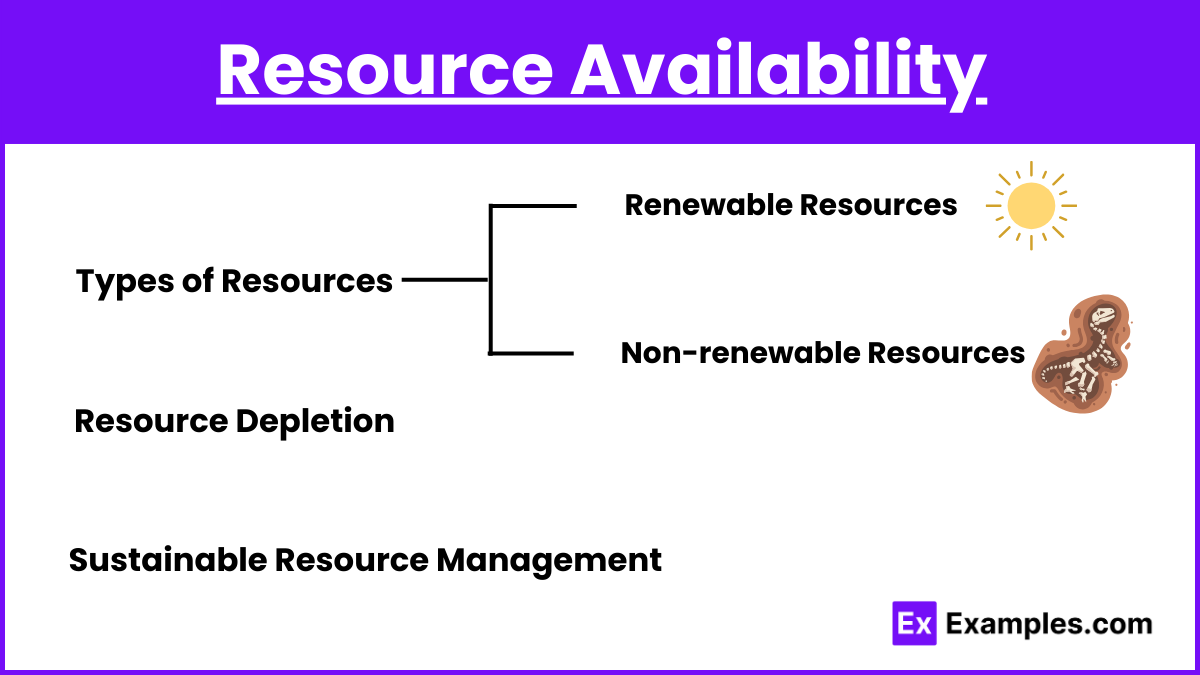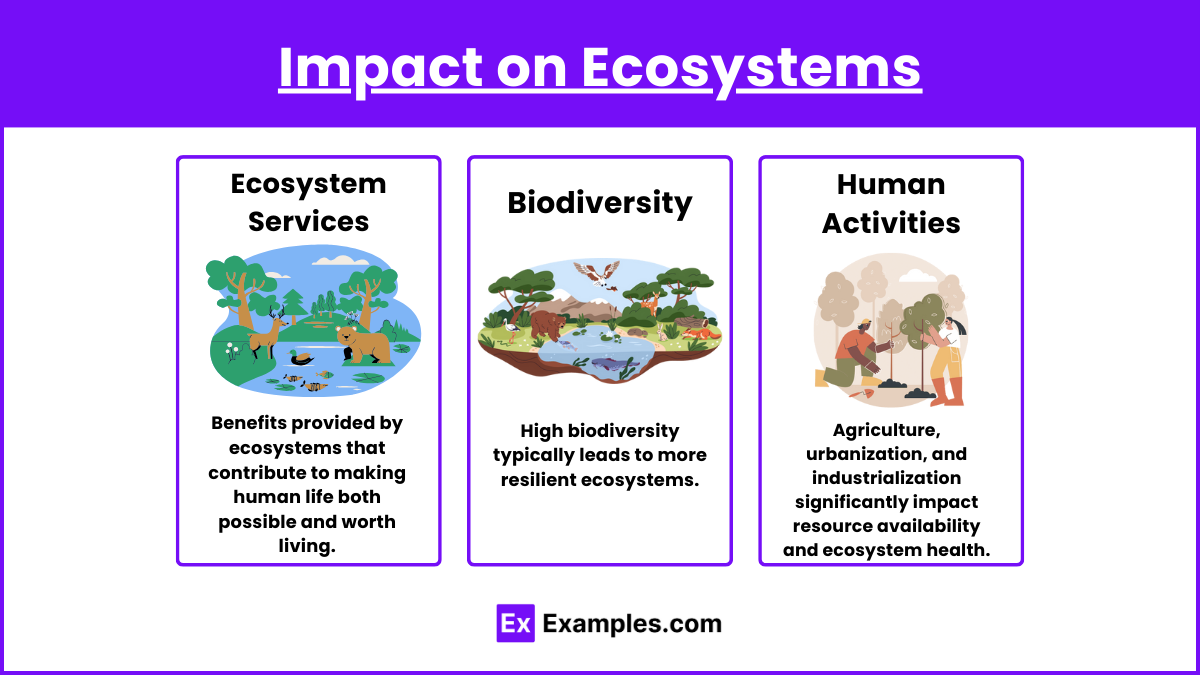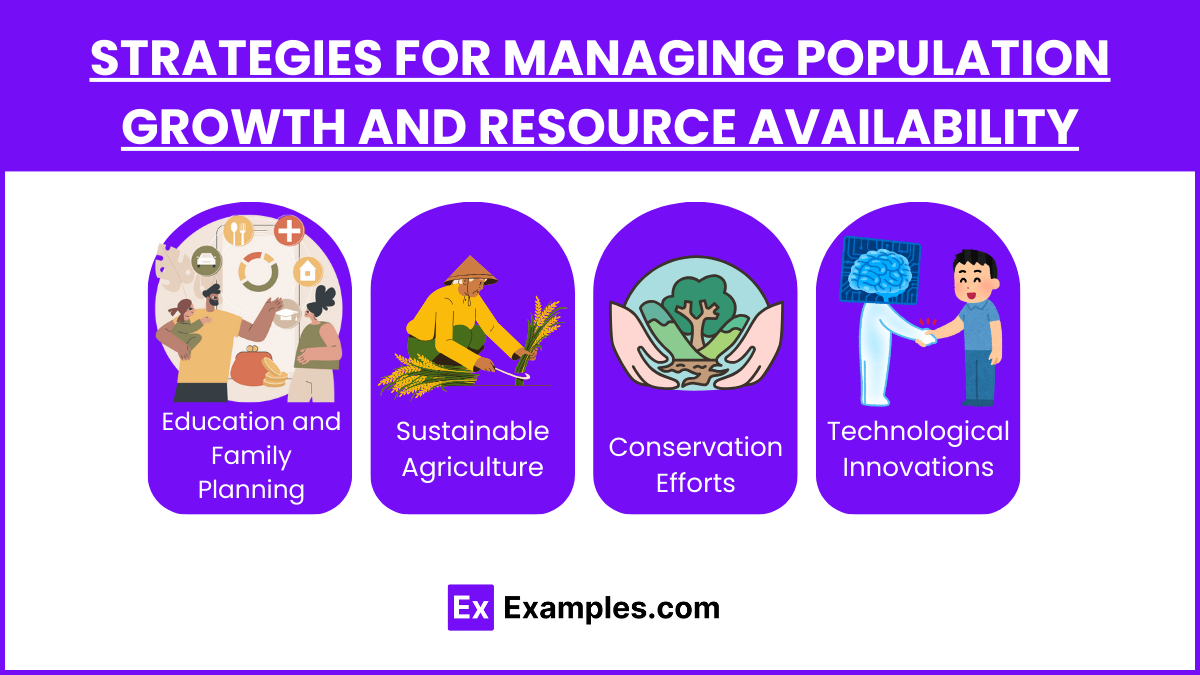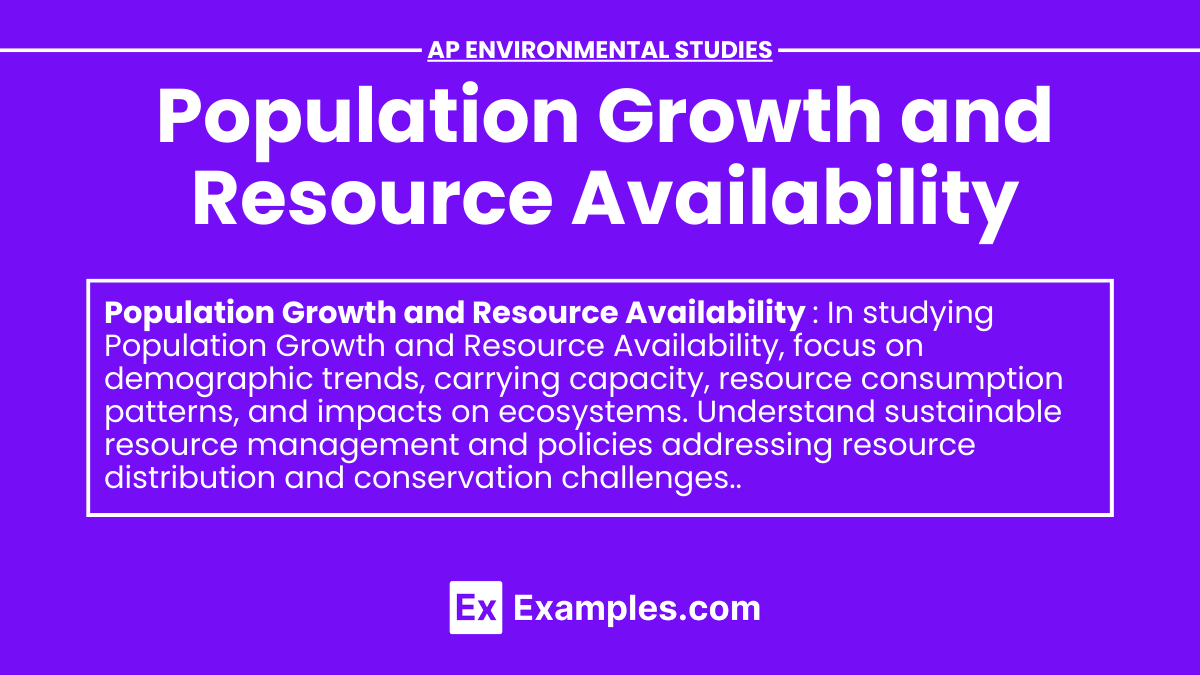Population growth and resource availability are fundamental concepts in ecology, as they influence the structure and function of every ecosystem. As populations increase, the demand for resources such as food, water, and habitat also rises, impacting the delicate balance of biodiversity within these systems. The biosphere, which encompasses all ecosystems on Earth, faces challenges as human populations expand and consume resources at unsustainable rates. Understanding the interactions between population dynamics and resource limitations is crucial for maintaining ecological health and preserving the rich diversity of life on our planet.
Learning Objective
The learning objective for understanding population growth and resource availability is to explore how these factors interact within ecology to influence the structure and dynamics of an ecosystem. Students will examine the impact of increasing populations on resource demand and the resulting effects on biodiversity. This objective includes comprehending the concepts of carrying capacity, limiting factors, and sustainable management practices to maintain ecological balance. By grasping these principles, students will appreciate the broader implications for the biosphere and the importance of preserving ecological integrity for future generations.
Key Concepts
- Exponential Growth
- Occurs when resources are abundant.
- Characterized by a J-shaped curve.
- Example: Human population growth in recent centuries.
- Logistic Growth
- Occurs when resources are limited.
- Characterized by an S-shaped curve.
- Includes a carrying capacity (K), the maximum population size that an environment can sustain.
- Carrying Capacity
- Determined by resource availability and environmental conditions.
- When a population exceeds carrying capacity, it results in resource depletion, increased mortality, and decreased birth rates.
- Limiting Factors
- Density-Dependent Factors: Factors whose effects on the size or growth of the population vary with the population density. Examples include competition for resources, predation, disease, and waste accumulation.
- Density-Independent Factors: Factors that affect population size regardless of the population density. Examples include natural disasters, climate change, and human activities.
- Population Dynamics
- Birth Rate (Natality): Number of births in a population over a certain period.
- Death Rate (Mortality): Number of deaths in a population over a certain period.
- Immigration: Movement of individuals into a population.
- Emigration: Movement of individuals out of a population.
Resource Availability

- Types of Resources
- Renewable Resources: Resources that can be replenished naturally over time, such as sunlight, wind, and biomass.
- Non-renewable Resources: Resources that are finite and cannot be replenished on a human timescale, such as fossil fuels and minerals.
- Resource Depletion
- Overexploitation of resources leads to depletion.
- Example: Overfishing, deforestation, and overgrazing.
- Sustainable Resource Management
- Practices aimed at using resources in a way that meets current needs without compromising the ability of future generations to meet their needs.
- Examples: Sustainable agriculture, water conservation, and renewable energy usage.
Impact on Ecosystems

- Ecosystem Services
- Benefits provided by ecosystems that contribute to making human life both possible and worth living.
- Examples: Pollination, water purification, climate regulation, and soil fertility.
- Biodiversity
- High biodiversity typically leads to more resilient ecosystems.
- Loss of biodiversity can result from habitat destruction, pollution, overexploitation, and invasive species.
- Human Activities
- Agriculture, urbanization, and industrialization significantly impact resource availability and ecosystem health.
- Example: The Green Revolution increased food production but also led to soil degradation and water resource depletion.
Case Studies
- Human Population Growth
- The human population has grown exponentially, especially since the industrial revolution.
- Impacts include increased demand for food, water, and energy, leading to environmental degradation.
- Easter Island
- A classic example of resource depletion leading to societal collapse.
- The overexploitation of trees led to soil erosion, loss of crop production, and eventual population decline.
- Aral Sea
- Once the fourth-largest lake in the world, now drastically reduced due to water diversion for agriculture.
- Consequences include loss of fisheries, increased salinity, and local climate changes.
Strategies for Managing Population Growth and Resource Availability

- Education and Family Planning
- Sustainable Agriculture
- Techniques like crop rotation, agroforestry, and organic farming can increase food production while preserving environmental health.
- Conservation Efforts
- Protecting natural habitats and restoring degraded ecosystems.
- Implementing policies to protect endangered species and promote biodiversity.
- Technological Innovations
- Developing new technologies for renewable energy, waste management, and resource-efficient production can mitigate the impacts of population growth on resources
- Promoting family planning and education, especially for women, can help manage population growth.
- Example: Countries with comprehensive family planning programs often see lower birth rates.


